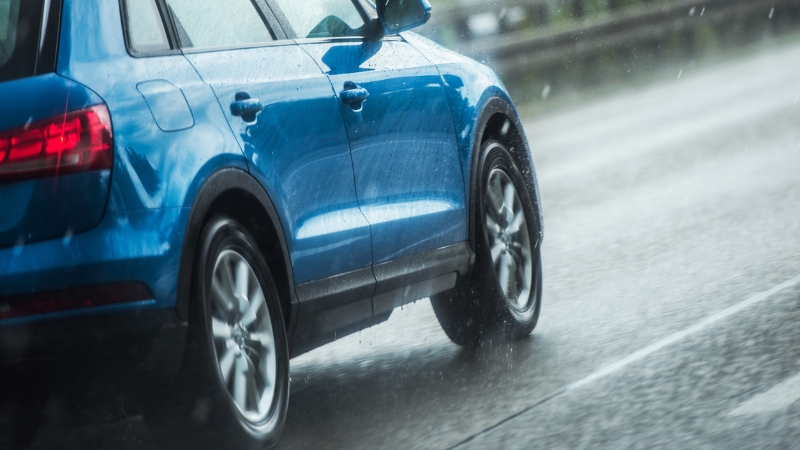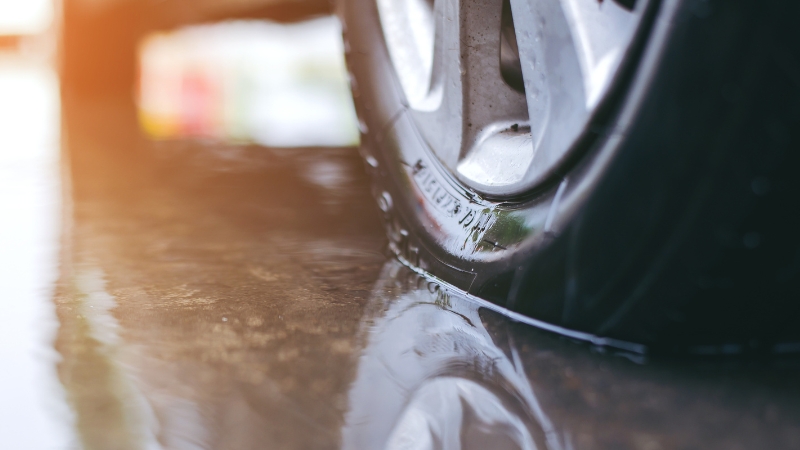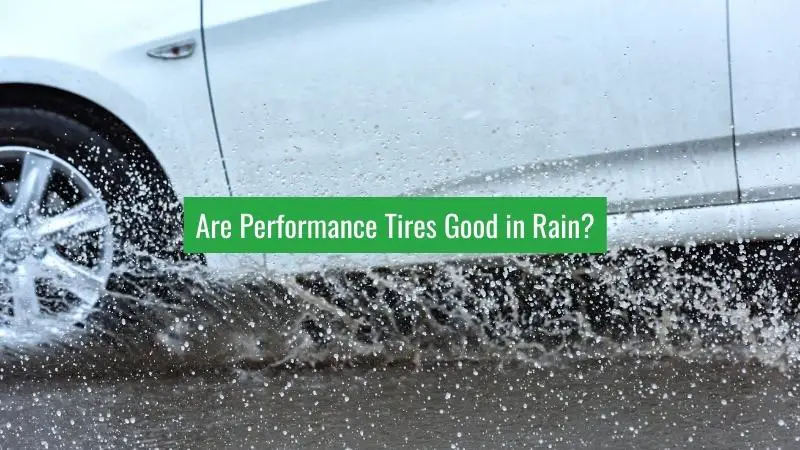When it comes to driving in the rain, you might be wondering if performance tires are a good choice for wet conditions.
As a driver, choosing the right type of tire is crucial for maintaining safety and control on the road, especially during inclement weather.
Performance tires, known for their superior handling and enhanced grip, are primarily designed for high-speed driving and quick acceleration. While they offer exceptional traction on dry roads, their performance in wet conditions may not always be optimal.
In comparison, all-season and specialized wet-weather tires often feature warmer rubber compounds and water-dispersing tread patterns designed specifically for rainy conditions, providing a safer and more consistent driving experience.
As you evaluate your tire options, it’s essential to consider what type of driving conditions you regularly encounter and prioritize your needs accordingly.
While performance tires may offer exciting handling capabilities, it’s important to weigh the trade-offs when it comes to their performance in rainy conditions.
Performance Tires Explained

Performance tires are designed to provide excellent grip, handling, and control for your vehicle, especially at high speeds. These tires usually have a softer rubber compound, which allows them to grip the road surface better during acceleration, braking, and cornering.
To achieve these performance benefits, manufacturers optimize the tread pattern, sidewall construction, and internal structure of these tires.
When it comes to wet conditions, performance tires can offer some advantages. They typically feature wide circumferential grooves and a directional tread pattern to channel water away from the contact patch effectively. This helps reduce the risk of hydroplaning and maintains traction on wet surfaces.
However, it is important to note that not all performance tires are created equal in terms of wet grip. Some may perform better in dry conditions but sacrifice some wet performance due to their specific design and compound. Therefore, it is crucial to choose a performance tire that has been designed and tested explicitly for wet conditions to ensure optimal performance in the rain.
It is also essential to consider that performance tires may not be the best option for all drivers and situations. Other tire types, such as touring tires or all-season tires, can provide a more balanced performance across various conditions and might be a better choice for daily driving or when wet driving performance is not the main priority.
Touring tires, for example, focus on a smoother, quieter ride with longer tread life, while all-season tires aim to provide adequate traction and handling in different weather conditions, including light snow.
How Rain Affects Tire Performance
When driving in rain, your vehicle’s tires play a critical role in maintaining traction and stability. The wet conditions reduce friction between the tires and the road, making it increasingly important for your tires to provide the necessary grip to prevent hydroplaning or loss of control.
Performance tires, specifically summer tires, are designed with special tread patterns that help repel water and prevent it from collecting in the grooves and sipes. This ensures that when you encounter rain, your tires are able to shed water more efficiently, reducing the risk of hydroplaning or losing control of your vehicle.
It is essential to consider the condition of your tires when driving in rain. Tires with lower tread depth may perform worse in wet conditions due to a reduced ability to channel water away from the contact patch.

According to a study by Consumer Reports, tires with only 4⁄32 inch of tread remaining can increase stopping distance by up to 87 feet on wet roads. Therefore, it’s crucial that you keep an eye on your tire tread depth and replace your tires when necessary.
Comparing performance tires to other types, like all-season tires, it’s essential to understand their advantages and limitations. Performance tires excel in providing increased grip and handling in dry and wet conditions.
However, they may be inadequate in snow or ice situations due to their specialized rubber compound and tread patterns. On the other hand, all-season tires offer a more versatile and balanced performance across varying weather conditions, including light snow.
Pros and Cons of Performance Tires in Rain
Performance tires come in a variety of designs and rubber compounds, offering distinct advantages and disadvantages when it comes to driving in heavy rain.
In this section, we’ll take a closer look at the pros and cons of using performance tires in wet conditions.
Pros:
- Grip: Some high-quality performance tires are designed with a special rubber compound that stays flexible and grippy in almost any situation, including rainy weather.
- Handling: Performance tires often have tread patterns and radial designs that help to evacuate water more effectively, providing better control and responsiveness during heavy rain.
- High-speed safety: These tires are engineered to resist hydroplaning at high speeds, ensuring that you maintain traction even when encountering large puddles.
Cons:
- Winter performance: In general, performance tires are not suitable for snowy or icy conditions, as they may become brittle and lose grip in cold temperatures.
- Uneven wear: Depending on the rubber compound used, performance tires can wear unevenly, especially if driven aggressively on both dry and wet surfaces.
- Price: Performance tires tend to be more expensive than all-season tires or other tire types, so outfitting your vehicle with them can be a larger investment.
Keep these factors in mind as you consider incorporating performance tires into your vehicle setup for driving in rainy conditions.
Though they offer some advantages in grip, handling, and high-speed safety, their limited winter performance, potential for uneven wear, and higher price point are important factors to weigh in your decision.
Comparing Performance Tires With Other Tire Types in Rainy Conditions
In this section, we’ll compare performance tires with other tire types, specifically all-season tires, touring tires, and winter tires, in terms of their performance in rainy conditions.
This information will help you determine if performance tires are suitable for your driving needs during wet weather.
All-Season Tires
All-season tires are designed to provide a balanced performance for various driving conditions, including wet roads. Most all-season and performance all-season tires have good hydroplaning resistance, making them a reliable choice for rainy days.
Touring Tires
Touring tires, also known as grand touring tires, are designed to offer a smooth, quiet ride with better handling than standard all-season tires. While some touring tires might have a decent performance in rainy conditions, their primary focus is on comfort and ride quality.
Performance tires often have more aggressive tread patterns and rubber compounds tailored for wet grip, making them a better option if you prioritize handling and control on wet roads.
Winter Tires
Winter tires, also known as snow tires, are specifically engineered to provide excellent grip and control in cold, snowy, and icy conditions. They might not be the best option for optimal performance in rainy conditions, as their tread patterns and rubber compounds are designed to handle snow and ice rather than water.
Performance tires or all-season tires with good hydroplaning resistance would be a more suitable choice for driving in wet weather.
To decide which tire type best suits your needs, consider your driving habits, the weather conditions you typically encounter, and your priorities in terms of handling, comfort, and control.
Each tire type has its own advantages and disadvantages, so it’s essential to understand their differences and choose accordingly.
Key Factors for Optimal Tire Performance in Wet Conditions

Choosing the right tires for wet conditions is essential for maintaining control and safety while driving in the rain. Here are some key factors to consider when evaluating the performance of different tire types in wet conditions:
Tread Pattern: Tires designed to perform well in wet conditions often feature unique tread patterns that effectively channel water away from the contact patch between the tire and the road. Look for tires with deep grooves and multiple sipes that prevent hydroplaning by displacing water more efficiently than standard tire designs.
Rubber Compound: The composition of the rubber used in a tire can impact its performance in wet conditions. Some performance tires use specific rubber compounds that provide better grip on wet roads. Keep an eye on the choice of rubber compounds and select tires that offer a balance between wet and dry performance.
Performance in Various Temperatures: As you might be aware, the performance of tires can change based on the ambient temperature. In colder temperatures, some high-performance tires can lose flexibility and grip, negatively impacting their wet weather performance. In contrast, all-season and touring tires are generally formulated to maintain performance across a wider temperature range.
When comparing performance tires to other tire types, it’s essential to consider your specific driving needs and conditions. While high-performance tires can offer better grip and handling in wet conditions, they might not be the best choice if you frequently encounter colder temperatures or heavy snowfall.
Conclusion
In summary, performance tires can be effective in wet conditions, but it’s crucial to ensure that they are specifically designed for rainy environments. Tires such as the Michelin Pilot Sport 4S and Continental ExtremeContact Sport are known for their proficiency in wet weather.
When choosing tires, always prioritize safety and performance in line with your specific driving habits and geographic location. By doing so, you’ll be better prepared for driving in rainy conditions with confidence and security.
Hi, my name is Niklas, the head content creator & CEO of Whirling Wheelz. I am very interested in vehicles of all kinds, mainly cars. I have a car mechanics degree from high school and a big hobby of mine is to follow the WRC (World Rally Championship) both online and through travel.


